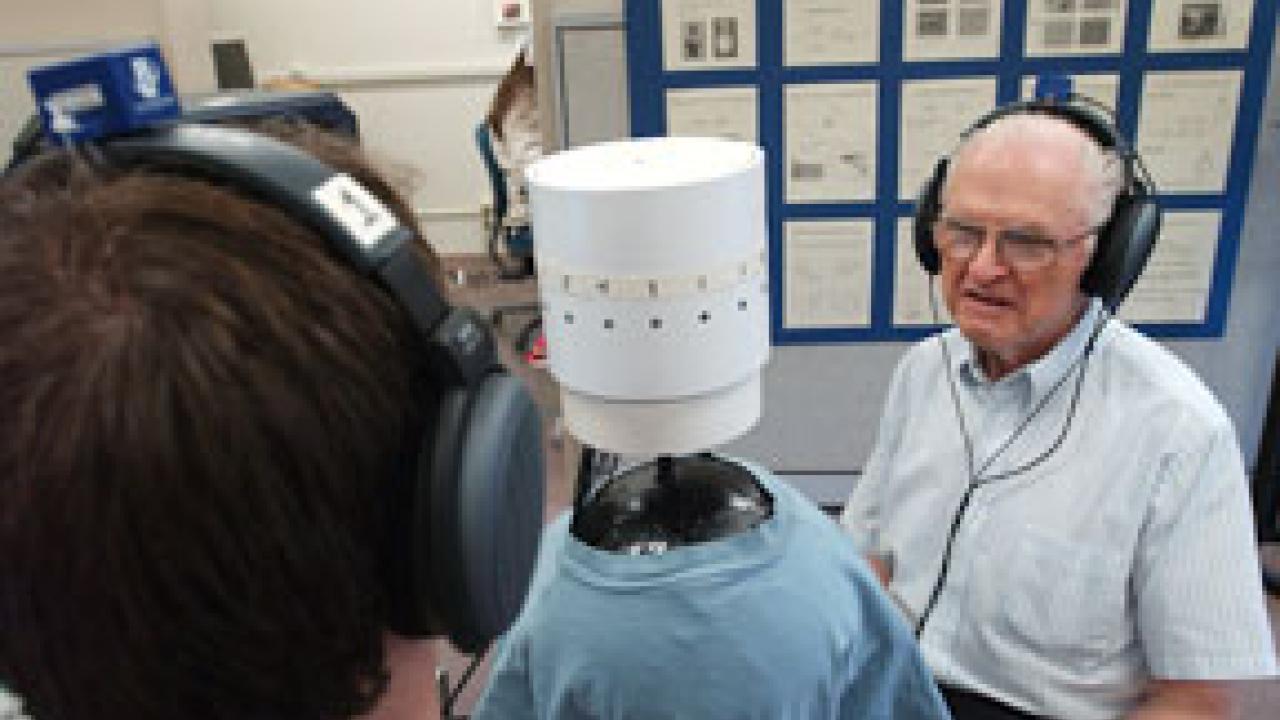A conversation snaps around you. A string trio plays in front of you as you turn your attention from cello to violin. A soprano walks across the stage, and you turn your head to follow her voice. Conventional sound recording cannot capture those experiences -- but an invention by audio engineers at UC Davis is changing that.
Motion-tracked binaural sound (MTB) captures cues for direction, distance and movement and the subtleties of natural, ambient sound that other systems don't. Developed by Ralph Algazi, Richard Duda and Dennis Thompson at the Interface Laboratory in the UC Davis Center for Image Processing and Integrated Computing, the patent-pending technique uses off-the-shelf equipment.
For the listener, it's an eerie experience of listening to invisible people talking, playing music or singing around you while you can turn your attention from one to another.
"Conventional audio playback doesn't reflect how you hear in real life," Algazi said. "Your body, the shape of your head and the room acoustics all affect how you hear."
Conventional binaural recording uses microphones embedded in a dummy head to record sound, so that playback through headphones mimics the recording. That method does a fair job of reproducing sounds to the left and right but not to the front. Furthermore, it doesn't allow for movement, Duda said.
The new method records through multiple microphones (eight for voice, 16 for music) spaced around a head-sized ball or cylinder. The sound is played back through headphones with a small tracking device attached to the top to follow head movements. As you turn your head while listening, the system mixes sound from different microphones, reproducing what you would hear if you were in the room.
Listeners can move their heads to locate a sound source, turn to "face" a person speaking and tell when sound sources are nearby or far away. In addition, MTB captures the ambient sounds of the location, so you recognize the echoes in a church or the confines of a conference room.
The engineers have made sample recordings with musicians from the UC Davis music department. William Beck, a composer of electronic music and lecturer, said that live recordings could be a major application. "The 'being there' feel is something people would really like," he said.
The technique could also be used for teleconferencing, computer games and virtual- or augmented-reality systems.
